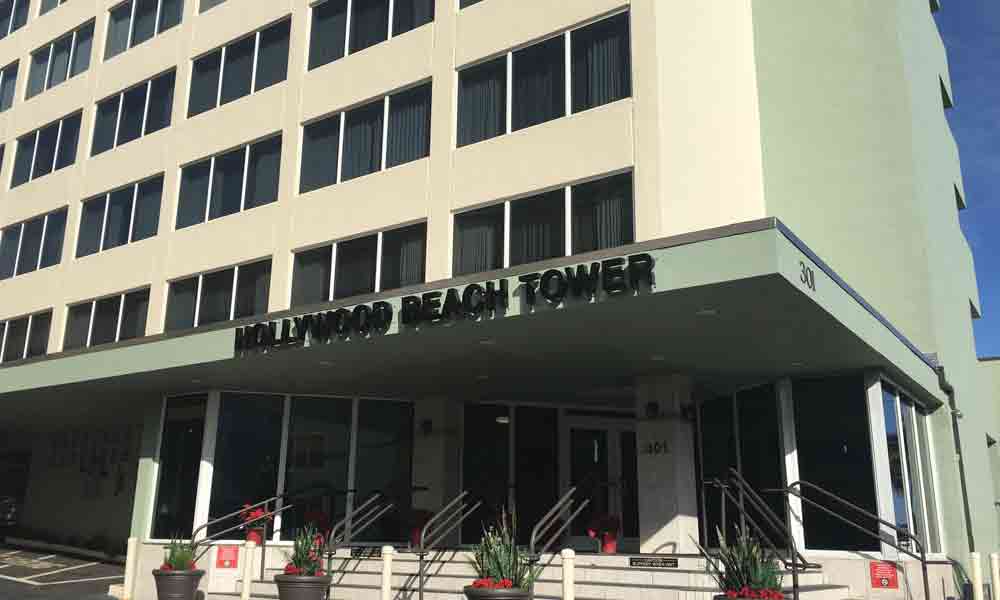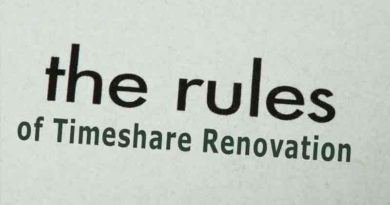Your Most Perishable Asset

How many things do you remember your college professors saying? If you’re like me, you probably don’t have any quotes at the ready. But Tom Saver, vice president of revenue for National Hospitality Group of Myrtle Beach, South Carolina, keeps one piece of a professor’s advice in mind all the time: “Your most perishable product is a room night not sold.” How many things do you remember your college professors saying? If you’re like me, you probably don’t have any quotes at the ready. But Tom Saver, vice president of revenue for National Hospitality Group of Myrtle Beach, South Carolina, keeps one piece of a professor’s advice in mind all the time: “Your most perishable product is a room night not sold.”
“You always want to move the inventory,” he says. “If an owner, exchange guest or renter isn’t using it, you’re losing out on revenue that can be used to sustain the resort or finance resort improvements.”

Still, Saver and fellow resort management professional Kelly Brady-Snyder, RRP, senior director – owner loyalty at Grand Pacific Resorts of Carlsbad, California, both know that all renters aren’t created equal—and it all goes back to serving the resort owners. “The way that we look at inventory is that it’s all driven by the owner,” Brady-Snyder says. “Our resorts, our call center, our owner reservations systems, they’re all most successful when you have the inventory dialed in.”
How do they make that happen? Here, Saver and Brady-Snyder share their insights on marketing and selling rental inventory, plus some of the tools they use to make their jobs easier. Why is there “excess” inventory?
In a perfect world, a timeshare resort would be 100 percent sold out to owners who either use their week or exchange it every year, and every one of those owners would remain current on paying their maintenance fee. However, we all know that perfection is solely an ideal. Saver and Brady-Snyder have several types of inventory available for their rental programs.
- HOA- or Developer-Owned Weeks – These weeks may have been deeded back by owners, purchased on the resale market to protect price integrity or, in the case of newer properties, haven’t yet been sold. The advantage of this type of inventory is that the rental manager can forecast its availability far in advance.
- Intervals with Unpaid Maintenance Fees – When owners haven’t paid their maintenance fees but haven’t yet been foreclosed on, resort management can rent the inventory to recoup the annual fees.
- Owner Rentals – Owners who don’t plan to use their weeks can have the resort management rent their week on their behalf, with the rental manager receiving a commission on the rental. At Grand Pacific, if the week is not rented by two weeks before the start date, the owner can still choose to deposit it with Grand Pacific for its original internal exchange value.
- Forecasted Breakage – While resort managers strive for owners to use all their weeks, a certain percentage goes unused. Grand Pacific uses sophisticated modeling tools to determine when inventory won’t be used and includes that inventory in its rental program. “Even if you have owner utilization in the mid-90-percentile range, that still means 4 to 6 percent of inventory isn’t reserved by owners,” Brady-Snyder says. “We try to make educated decisions on what to do with the inventory so we can get it out earlier than distressed inventory, and that benefits the association and the owners.”
How do you balance serving owners and getting the most from rentals?
A popular benefit of timeshare ownership is the ability to book “bonus time” above and beyond the ownership interest at the home resort or other properties in its network. Letting owners use unreserved time at a preferred rate drives owner loyalty, but is it the highest and best use of the asset? “You always want to take care of owners first as we know they are the lifeblood of the association,” Saver says. “They are the ones who are ensuring that the resort remains sustainable.” At NHG, owners may be able to rent low-season weeks for the cost of the cleaning fee plus a small charge. However, that deal isn’t available for high-demand weeks.
At Grand Pacific, the lowest nightly rate paid by owners at their home resort is one-seventh of the maintenance fee. For other resorts in their network, it’s a bit more but still a good value. Those weeks, however, don’t become available until about three weeks before the dates. “Our owners are very aware that bonus time is about 21 days in advance; they work within the bonus time windows,” Brady-Snyder says. “Before that time, owners and the general public have equal access to the inventory but owners will always pay, via our ResorTime Network, less.”
How do you market the inventory?
Having resort guests book directly through the resort’s website or call center is the most profitable way to market resort inventory as no commission is paid. That’s not going to do the job on its own, however. “In today’s marketplace, you can’t prosper without the OTAs, specifically booking.com and Expedia,” Saver says. “They make up 80 percent of all online bookings. You want to drive more direct bookings, but you’re going to have a lot of inventory go dark if you’re not using the OTAs.”
Brady-Snyder also reports success listing inventory with HomeAway and Airbnb.
Still, email campaigns targeting owners and past guests are still effective if the offer is right, both experts say. This can be supplemented with social media campaigns on Facebook, Instagram, and even Pinterest, which Saver says has proven effective.
How do you set prices and track the inventory?
“When it comes to pricing in general, my philosophy is to protect and promote all inventory,” Saver explains. “You protect it when you only have a few weeks left, for example, 4th of July week. You promote when you have more inventory available as in the offseason. We’re always working with the general managers at each resort to come up with the best pricing decisions. Their input is extremely important, because they know what’s going on in their areas and can often tell us demand that we might not be seeing yet.”
When it comes to high-demand time, rates can soar. “We have events such as Coachella, crush season in Napa, or events on Coronado Island, and we price within the market to max profit for the Association.”
Sophisticated software has made the rental manager’s job a lot simpler in recent years. Both Saver and Brady-Snyder’s companies have SPI property management software, but they supplement that with channel management software to channel managers efficiently manage the different online distribution channels that their property sells through, including their proprietary sites and OTA sites such as Expedia and Booking.com. The software ensures that pricing is consistent and that inventory is removed from other sites once it has been reserved.
Saver relies on ChannelRUSH, while Brady-Snyder has recently started using SiteMinder. In addition, Saver uses the tools provided by the OTAs, such as Expedia Powered Technology and Priceline’s BookingSuite. “Expedia and Booking.com own many other site and are having this Coke/Pepsi type of battle, so they’re providing all sorts of free tools to that allow you to look at your competitors’ pricing,” he says.
Extra Benefits?
In addition to supplementing a resort’s revenue stream, a robust rental program can also have an important side benefit: attracting new owners. “I would say that more than 90 percent of the buyers of our resale weeks have been past rental guests,” Saver says. “They come to our wine and cheese parties, where it’s a very social atmosphere. Often, they’re excited to talk to a representative and take a tour. After experiencing the resort, they want to see what we have to offer.”



